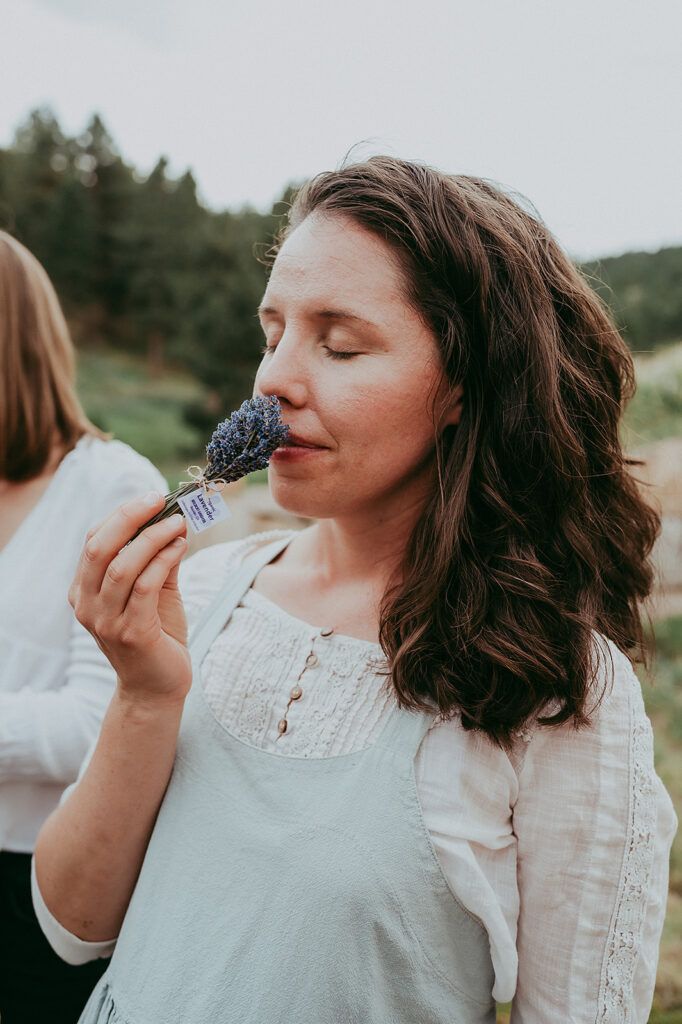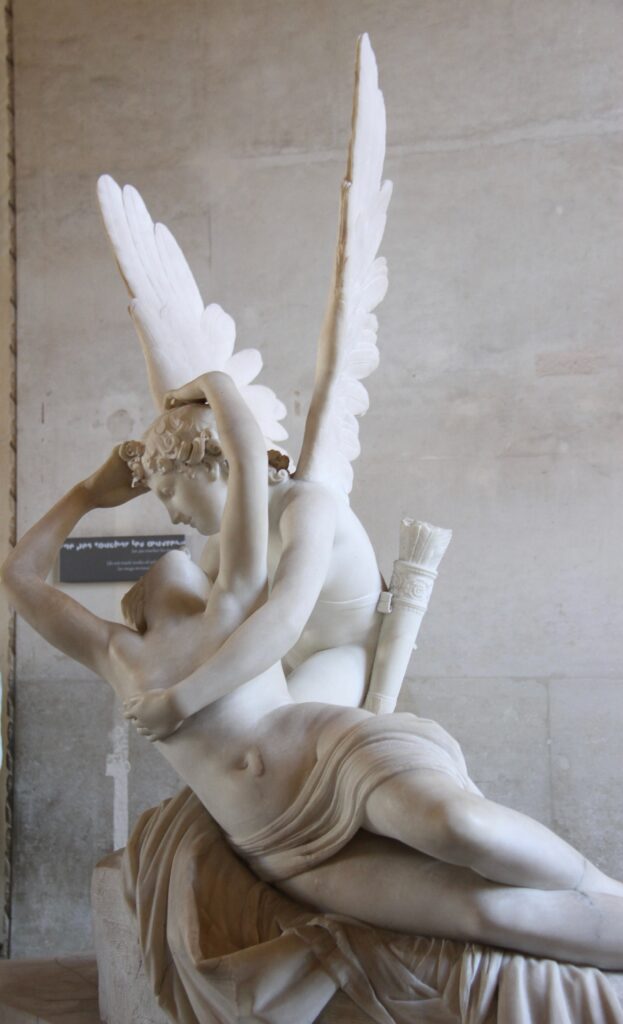
Ah that month in late winter that often invokes visions of the colors red, pink, and white. We may even conjure images of small cherubs with a bow and arrow and adornments in the shape of hearts. We are talking of course about Valentine’s Day.
And while this day may make some of us cringe a little, as we immediately may start to imagine commercialized aspects of this holiday such as expensive chocolates, packed restaurants with long reservation lists, and extravagant bouquets of roses, we invite you to release these connotations associated with this time, and sink in to a space where we simply celebrate the very concept of love itself, and explore the sensual.
In today’s society, there is often a feeling of grief or a longing for the sense of connection our ancestral selves long for. We are a species that are not meant to live in the often isolated way that we do. We are beings that were equipped with strong emotional systems and bodies with complex intelligence that were innately designed to give and receive love, to live in close community, and to be able to express and explore sensuality free of shame, guilt, or repression.
So while our modern association with Valentine’s Day tends to be targeted mostly at couples with established relationships, we can explore our relationship to love and the sensual regardless of whether we may be with a partner or not, for this is not a requirement and truly begins foundationally within ourselves.

The Roots of Valentine’s Day
Don’t force yourself to fall in love just because you think it’s your turn. Wait for a while, maybe Cupids are having a hard time searching for the heart that deserves the kind of love your heart can give.
Before we dive in further, we thought we would look back in time and muse on the roots of this “day of love,” for Valentine’s Day actually has quite an ancient history, perhaps as far back as the 6th century BCE. It may be no surprise that this holiday has pagan roots, and is thought to have originated with the ancient Roman festival once known as Lupercalia.
This festival was quite wild to put it lightly. It was a day steeped in fertility rituals in caves, animal sacrifices and adorning of blood, day-long nakedness, and random matchmaking that resulted from men drawing the name of potential women from a jar. Once coupled, the partners would remain together until the following Lupercalia, which for some ended in falling in love and actually getting married.
It is believed that Lupercalia was a day to honor the Roman god of fertility, Lupercus, as well as a day to recognize the she-wolf who nurtured the abandoned twins Romulus and Remus, the original founders of Rome according to Roman legend.
Lupercalia was eventually replaced by Valentine’s Day as Christianity began to rise. It is widely believed that the day is named after Saint Valentine, who was a man imprisoned and ultimately executed by Roman Emperor Claudius the II for marrying couples who practiced Christian faith in secret. It is thought his execution occurred on February 14th, and therefore Valentine’s Day is in memoriam of his martyrdom.

What we have come to know as Cupid also has ancient roots. However, Cupid is thought to have originated in Greek mythology and lore, known originally by the name of Eros, who was the god of love. In the stories of Eros, he is depicted as having a bow, but two types of arrows: gold to cause those shot with them to fall in love, and lead to cause the opposite – repulsion or aversion.
However, the original Cupid was a handsome god, and it is not until fairly recent times that Cupid became the tiny cherub most of us think of today. This was actually something that came about in the Victorian era where the cutesy image was used to design Valentine’s cards, and it sort of stuck, continuing on into modern day.
Exploring Sensuality
The term “sensual,” has in many ways become synonymous with “sexual” for much of our modern culture, particularly in the Western world. It has also in largely become a term that is often connected to concepts that are seemingly negative such as lewdness, unchaste, or provocative.
However, the word sensual simply means, “relating to or consisting in the pleasing of the senses.” While this can of course refer to sexual pleasure, we can find the sensual in what we may think of as the mundane. Sensuality can be invoked when we are overcome with the desire to dance like no one is watching when our favorite song is played, in the grounding feeling that comes over us as we sink into a hot bubble bath on a cold day, putting on that outfit that makes you feel like a rockstar, or the feeling of overwhelming passion that arises when we deeply inhale the scent of fresh roses.
In our modern society, the concept of sensuality has for many generations been seen as something that should not be explored, and is often repressed. We may feel a sense of shame associated with our sensual selves as a result, however, as argued by Dr. Diana Raab, author of “The Empowerment Diary” in an article for Psychology Today, being in touch with our sensual selves can be a powerful form of healing. She states that, “being sensual can be empowering. If you’re engaging in sensual activities with yourself, chances are that when the time comes to be sensual with others – whether on an intimate or sexual level – it will come more naturally… Being sensitive to our environment involves paying attention with all of our senses which is the root of true sensuality, and no doubt sensuality within yourself and others can be healing.”

Herbalism for the Sensual
We can yet again turn to the plants to help us connect with our sensual selves. A way to do this is to fully engage the senses when working with plants. This can happen with plants you work with in the garden, meet in nature (though of course ask permission first, as consent is imperative in all aspects of interacting with fellow beings of this planet), or even dried herbs. As you connect with the plant, invoke each of your five senses; what does the plant look like?
Explore where the leaf meets the stem, the vibrancy of the flowers, how tall the plant is, whether it is thin or broad. Does the plant represent anatomy, perhaps alluding to the part of ourselves it can assist in healing, or does it seem to symbolize an element of nature? What does the plant feel like? Does it have rough bark or fuzzy leaves? Is it prickly or is it soft? What does the plant smell like? Does it have a sharp scent, or a floral scent? If the plant is edible or can be ingested internally, what does it taste like? Is it sour, sweet, salty, spicy? What happens in your physical, emotional, and spiritual body when you work with the plant in each of these ways?
Herbal Love
As we have alluded to many times in this post, connecting with our sensuality begins with our own self-compassion and self-love. Work with herbs such as Hawthorn, Rose, and Passionflower to help open and tend to your heart space. These herbs connect deeply with not only our physical heart but our emotional heart, creating space for expansion and helping our hearts to open.
Perhaps it can be helpful to create an herbal infusion with water that has been charged by Rose Quartz, as this has properties that have an affinity for the heart chakra and helping us to return to ourselves and see ourselves with deep reverence and love. Working with the vibrational energy of flower essences are also a special way to invoke self-compassion, as they work with our spiritual and energetic bodies and can help us connect on a deeper level and more intimately with our internal selves.
(Read more in our other posts all about Aphrodisiacs:
Scent-ual & Aromatic Herbs & Let’s Make Love)

Herbs can also be called upon for supporting intimacy. There are many herbs that actually have aphrodisiac properties, increasing feelings of desire and boosting libido. They also work with us from an empowerment perspective, drawing out our sacred sensual selves from within and helping us to feel confident, beautiful, and just plain sexy!
Herbs that work as aphrodisiacs include delicious aromatic herbs like Damiana, Rose, and Lemon Balm, as well as herbs that tantalize our taste buds while also nurturing our nervous system including Cacao, Maca, and Kava Kava, and warming, spicy herbs such as Cinnamon and Cardamom.
You all are beautiful, divine beings who were made to express love in all of its forms. We share our love with you this month and always, and want you to remember how special you are! Thank you for being part of this community.
Sources:
- History.com. “Lupercalia.” History.com. 13 December 2021. Retrieved from: https://www.history.com/topics/ancient-rome/lupercalia
- History.com. “Who is Cupid: Mythology Story, Facts, and History” 25 January 2023. Retrieved from: https://www.history.com/news/who-is-cupid
- Merriam-Webster. “Sensual.” Merriam-Webster. 25 January 2023. Retrieved from: https://www.merriam-webster.com/dictionary/sensual
- Raab, Diana. “How Sensuality Can Heal.” Psychology Today. 17 February 2021. Retrieved from: https://www.psychologytoday.com/us/blog/the-empowerment-diary/202102/how-sensuality-can-heal
Browse by category
- Aromatherapy
- Astrology & Magic
- Ayurdeva
- Botany Foraging & Gardening
- Chakras
- Digestion
- Earth Connection
- Energetics
- Flower & Gem Essences
- Folk Traditions
- Herbalism & Holistic Health
- Immune Support
- Materia Medica
- Mushrooms
- Nutrition
- Seasonal Living: Autumn
- Seasonal Living: Moon
- Seasonal Living: Spring
- Seasonal Living: Summer
- Seasonal Living: Winter
- Skin & Body Care

Don’t Miss a Thing!
Enter your email below to be the first to know about sales, new products and tips for taking care of your pieces.

